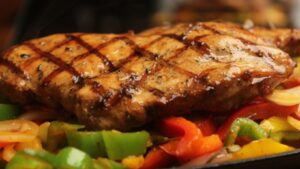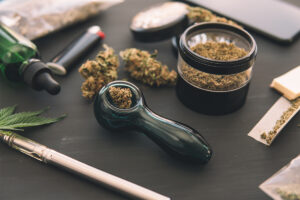Steamed colocasia leaves are a popular dish in China. It is often served as a side dish with meat or fish, and it is also a popular snack food. The leaves are typically soaked in salted water for about ten minutes before being cooked. They are then stir-fried with minced pork, garlic, ginger, scallions, soy sauce, sugar and white pepper until they turn crispy brown.
These steamed colocasia leaves are a delicious recipe from the state of Kerala in India. They are called pathrode or pathrado or pathrodo.
Pathrado has a special place in Konkani’s heart. Pathrado reigns supreme in Konkani cuisine. When Konkanis see colocasia leaves, they go wild. We’ll have to prepare some delicious pathrado with colocasia leaves and eat it boiling hot with plenty of oil on top. That is correct. I’m not exaggerating when I say this.
Pathrado is a dish from Konkani cuisine. Colocasia leaves are used to make pinwheels. In Kannada, it’s known as pathrode, while in Konkani, it’s known as alva panna pathrado. Rice, shredded coconut, tamarind, and red chilies are ground into a spicy batter. Colocasia leaves are rolled, cut, and cooked after being coated with this batter. These steamed pathrode slices are then topped with a generous amount of coconut oil and eaten hot or cold. It’s pure bliss to eat a steaming hot pathrode straight from the steamer with plenty of coconut oil on top!
Pathrode are prepared by steaming, shallow frying, or even deep frying pinwheels of colocasia leaves. A simple video on how to create pathrado may be found here.
And, given our passion for pathrado, we Konkanis don’t throw away any leftovers. Leftover pathrode is repurposed into delectable meals. 🙂 To make pathrode slices crispy, we shallow fried them in oil and serve them hot. We often make a hot coconut curry using leftover pathrode and serve it with rice. Pathrode gashi is the Konkani name for this dish. Pathrode usli is a delicious, spicy, sweet pathrode stir fry made using leftover pathrode.
Pathrado is a must-have meal during Ganesh Chaturthi and Suthapunav celebrations (a festival celebrated on a full moon day once a year). Pathrado is made at least thrice a week in most Konkani households.
Pathrode is made from several kinds and varieties of colocasia leaves. While foraging for colocasia leaves to produce pathrode, keep the following things in mind:
- For an extremely soft pathrode, use the tenderest colocasia leaves.
- Tender colocasia leaves should be used as much as possible since they contain less calcium oxalate. The itching/stinging feeling in your throat and mouth after eating colocasia leaves is caused by calcium oxalate crystals in the leaves. Colocasia leaves that are too ripe or too old should not be used. Even after cooking, they may cause a lot of irritation.
- Pick the leaves that have just opened up and grown, as well as the leaf below it, when picking colocasia leaves. Known as suli paan and the one below it. Use mature colocasia leaves instead, since they contain a lot of calcium oxalate, which causes irritation.
In Konkani, colocasia leaves are known as ‘alva paan, pathrade paan.’ As a result, pathrado is also known as alva panna pathrado.
If you’re having trouble putting masala on the leaves, here’s a video to help:
Ingredients:
- 25-30 leaves of colocasia
- 1 cup medium-grained rice/dosa rice
- 1 cup shredded coconut (about 3/4 cup) (more coconut you add, softer pathrado you make)
- 3-4 bilimbi/1 tamarind the size of a lemon
- 10-12 red chili peppers
- season with salt to taste
- To taste jaggery
- Asafoetida, a pinch
3–4 people
Time to prepare: 50-60 minutes
Method of Preparation:
Masala preparation:
1. Soak the dosa/medium grain rice for at least 30 minutes. Wash and drain the water once it has been saturated.
2. Using as little water as possible, grind rice with tamarind, red chillies, salt, jaggery, shredded coconut, and asafoetida (soaked for a few minutes to soften) into a dry, gritty mixture.
3. Pour the batter into a separate basin and set it aside. In Konkani, this pulverized rice batter is known as ‘pathrade peet,’ with peet meaning batter.
Pathrado preparation:
4. Remove the stem part of the colocasia leaves using a knife. Using a sharp knife, carefully remove any thick veins found in the middle, on the back of the colocasia leaves. When deveining colocasia leaves, be careful not to rip them.
Colocasia leaves are tender and have few veins, so they don’t need to be deveined. If you’re using mature colocasia leaves, make sure they’re fully deveined before cooking to prevent a stinging or itchy feeling.
Colocasia leaves that are tender: (tarne alva paan in Konkani, tarne meaning tender)
Veins on the backside of mature leaves are usually completely developed. (June is known in Konkani as alva paan, which means mature.)
After deveining the leaves, they should look like this:
In Konkani, the process of deveining colocasia leaves is known as ‘narb kadache,’ with narb meaning veins and kadche meaning removal.
5. Thoroughly wash the colocasia leaves and set them aside to drain any excess water.
6. Begin creating a pinwheel after all of the extra water has been drained. A video showing how to create pinwheels out of colocasia leaves.
7. Place the largest leaf on a clean surface upside down. The leaf’s pointy end should be pointing away from you. Apply a consistent coating of ground masala to the back of the leaf. Apply a coating of masala on the whole leaf using your fingertips.
The technique of spreading a coating of crushed rice batter on colocasia leaves is known in Konkani as ‘pathrado saroche,’ with saroche meaning smearing.
8. Place another leaf on top of the first and continue until you have a stack of 8-10 masala-coated leaves (depending on how thick or thin you want your pathrado rolls and slices to be).
Make sure you use enough batter to cover the colocasia leaves while creating a pinwheel/pathrado. The inclusion of a lot of tamarind in the rice batter aids in the breakdown of calcium oxalate crystals found in colocasia leaves.
9. Because the size of colocasia leaves varies, try to evenly arrange the leaves you put on the largest, lowest leaf to ensure a consistent thickness pathrode roll afterward.
10. Fold the stack of leaves in half and apply masala on both sides as shown below.
11. Begin rolling it from one end to the other. Begin from the bottom and work your way up. Keep rolling until you get to the other end.
12. Roll them firmly so that the layers/leaves don’t open up when you cut them into pieces.
In Konkani, these rolls are known as ‘pathrade lola.’
13. Repeat with the remaining colocasia leaves, spreading and rolling as before.
14. In the meanwhile, start a steamer.
15. Using a sharp knife, cut each roll into thin slices of 1 to 2 inches thick. Hold the roll firmly in your hand while cutting it into slices, being careful not to press too hard with your fingers to avoid the masala from seeping out.
In Konkani, these slices are known as ‘pathrade phodi.’
16. Finally, put the slices in the steamer. In the steamer, you may stack the slices one on top of the other.
17. Steam them for 15 minutes on high heat, followed by 30 minutes on medium to low heat.
18. Drizzle a generous amount of coconut oil over the pathrode and serve immediately. The pathrode will be very soft even if it is scalding hot.
If you want to serve pinwheels that look nice and are firm, keep the steamer open for 10-15 minutes after steaming and then remove the pinwheels/pathrado.
Suggestions for serving
As a lunch side dish, serve steaming hot pathrode with plenty of coconut oil on top.
We eat steamed hot pathrode with plenty of coconut oil as soon as they are steamed in our home. Then they’re very soft. They lose their suppleness over time as they chill down.
We steam pathrode shortly before lunch or supper at home so that we may eat them soft and boiling hot with rice and dalithoy or any other curry.
Using pathrado that has been left over:
Any pathrados that are left over may be utilized in three ways:
1. Fry them till crisp in a frying pan with a lot of oil. Serve them hot as a lunch or supper side dish.
When pathrode is left over, it tends to harden as it cools. They lose their delicacy. These leftover pathrode get more harder and lose its flavor when refrigerated. They will become tender and fresh after being shallow fried in oil. Crispy pathrode may be made by shallow frying them in a lot of oil for a long period. I like those crisp pathrados with a delectable coconut oil flavor.
2. Pathrade gashi may be made using leftover pathrode. A delectable coconut curry with pathrode chunks.
3. You may also create a wonderful, sweet, spicy stir fry using leftover pathrado, known in Konkani as pathrade upakari/usli.
Observation:
- Use enough tamarind/bilimbi in the rice batter to avoid pathrode from causing itching or stinging after they’ve been cooked.
- Itching in the throat and tongue may occur after eating partly cooked pathrode, and may persist for many hours. As a result, steam the pathrados thoroughly.
- If you get a stinging or itchy feeling in your mouth or throat, drink sour buttermilk (or curds) to relieve the irritation.
- Colocasia leaves may irritate your skin and create itching when you handle them, whether you’re cutting, deveining, or washing them. Apply tamarind water or lemon juice to your hand before or after coming into touch with colocasia plants/leaves to prevent irritation. To relieve itching, use tamarind water, lemon juice, and then wash your hands with hot water.
- To offset the heat that the spicy pathrode may bring into your body, soaked green gram is added to the rice batter during grinding. If you want to use green gram, soak it for 3-4 hours before adding it to the batter while it’s being ground.
- Depending on how hot you want your pathrode, use red chillies.
- When you use a particular kind of colocasia leaves to create steamed pathrados, they come out extremely soft and delicious. In Konkani, these variants are known as tere paan and pandvala paan. They have soft leaves that soften when cooked, and they produce the finest, softest pathrados. Click here to see photos of these variations.
- Other kinds of colocasia, known in Konkani as marvala paan, bombay alva, and chitte paan, may also be used to make steamed pathrados. These colocasia species have thicker leaves that need a longer boiling time and a large quantity of tamarind/bilimbi to remove the itching. Click here to see photos of these variations.
More Konkani cuisine side dishes may be found here.
Pathrado, pathrode, patrado, alva paan, colocasia leaves, Konkani recipe, Konkani dish, Konkani cuisine, Udupi cuisine, Mangalore cuisine, Konkani cuisine, Mangalore food, Konkani cuisine, Mangalore food, Mangalore food, Mangalore food, Mangalore food, Mangalore food, Mangalore food, Mangalore food, Mangalore food, Mangalore food, Mangalore food, Mangalor
Chauthi
The patrade is a dish made of steamed colocasia leaves that are rolled into pinwheels.
Frequently Asked Questions
How do you get rid of colocasia itch?
You can use a colocasia plant to remove the itch.
Why arbi leaves itching?
How to devein colocasia leaves?
The best way to devein colocasia leaves is to use a knife.
Related Tags
- instant pathrode recipe
- kesa leaves
- kesuvina ele recipe
- maralva leaves
- how to identify colocasia leaves



